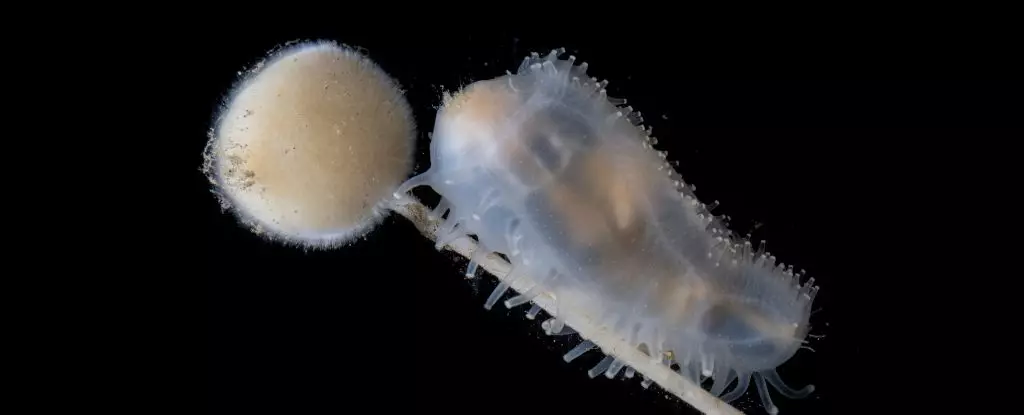In a world preoccupied with terrestrial chaos, a remarkable expedition into the depths of the South Sandwich Islands reveals the exquisite beauty of life teetering on the brink. The Schmidt Ocean Institute’s courageous crew aboard the Falkor (too) endured formidable challenges during this recent venture, yet their perseverance unveiled majestic ecosystems thriving around hydrothermal vents — environments thought to be devoid of life. This 35-day undertaking signifies not just a journey of exploration, but an urgent call to protect our oceans before they are irrevocably altered by climate change and reckless exploitation.
Picture the scene: towering waves and swirling icebergs almost devour the ship as it braves the tumultuous waters of the Southern Ocean, a realm many would see as uninhabitable. Yet beneath those seemingly inhospitable depths, life persists in wondrous forms. The expedition’s discovery of a vibrant coral garden at Humpback Seamount defies preconceived notions of what our oceans can offer. The region’s hydrothermal vents harbored extraordinary structures, with chimneys reaching heights of four meters adorned with life as incredible as it is diverse. How can we afford to turn a blind eye to these spectacular findings when our oceans are screaming for attention?
Unveiling Extraordinary Species
The footage garnered from this deep-sea exploration serves to elevate our understanding of marine biology. A truly breathtaking moment was seen through the lens of blackwater photographer Jialing Cai, who captured the elusive nudibranch at depths of 268 meters. This single discovery punctuates the fabulous kaleidoscope of life surrounding hydrothermal vents, showcasing species previously unknown to science. It’s somewhat heartbreaking to realize how little we know about our planet, yet equally exhilarating to know that these revelations push the boundaries of our understanding.
However, not every discovery sparks joy. Some moments, such as the sight of a grenadier fish harboring parasitic copepods in its gills, depict a darker facet of nature. It raises unsettling questions about the impact of environmental stresses on marine life and their covert struggles in the abyss. Are the pressures from climate change relentlessly gnawing at the fundamental fabric of these ecosystems, leading to such ghastly affiliations?
Indeed, the expedition shed light not just on beauty but initiated conversations about the precariousness of life in the deep sea. As scientists catalog the delicate relationships among various species, there’s an implicit reminder that these ecosystems are worth safeguarding. Discovering snailfish eggs nestled on black coral should trigger a collective gasp, a profound acknowledgment of marine complexity we know so little about. What other hidden wonders lay undiscovered in these dark waters?
The Urgent Call for Protection
The rhetoric surrounding ocean conservation often feels inadequately urgent, yet this expedition embodies the crucial intersection of discovery and responsibility. Scientists like Michelle Taylor emphasize the need for a holistic understanding of marine ecosystems. The Ocean Census seeks to accelerate our grasp on ocean life, but surely, it requires more than academic curiosity; it necessitates a collective societal effort to combat imbalances wrought by human action.
As the world grapples with climate change, the seemingly resilient marine environments inspire a sense of awe mixed with urgency. They represent not only the miraculous adaptability of life but also a stark reminder of our role in both nurturing and neglecting these fragile ecosystems. The breathtaking images captured during this expedition are not merely aesthetically pleasing; they are a visual manifesto delineating the diversity and intricacy of ocean life, filling us with hope even as they engender a profound sense of responsibility.
With every revelation comes the daunting realization that our time to act is limited. The stunning visualizations of life from depths previously unexplored are bittersweet until they galvanize action. In this, our mission is pronounced: we can no longer linger in the shadows of inaction but must emerge into the light of responsibility. This expedition epitomizes the spirit of inquiry that modern society so desperately needs to expand; we must lean into this legacy and advocate fervently for the protection of our oceans.

Leave a Reply